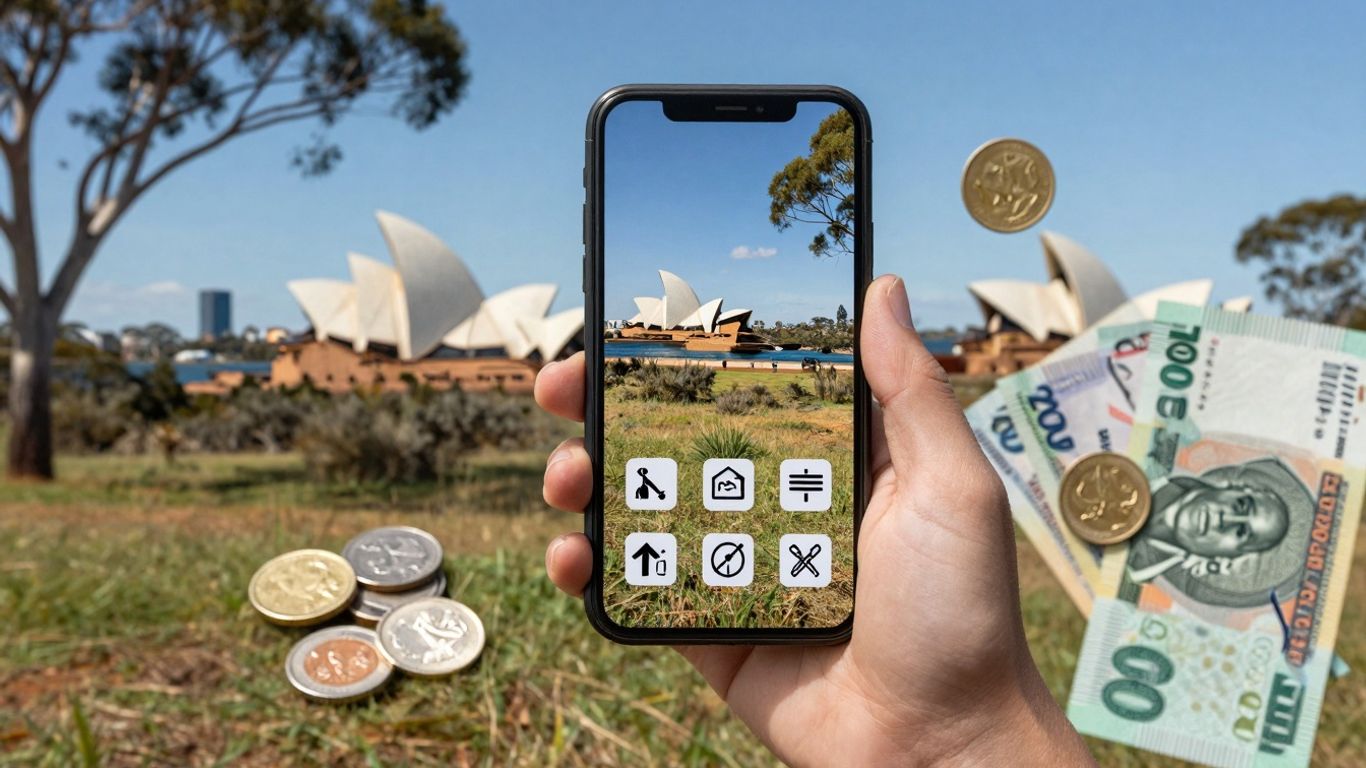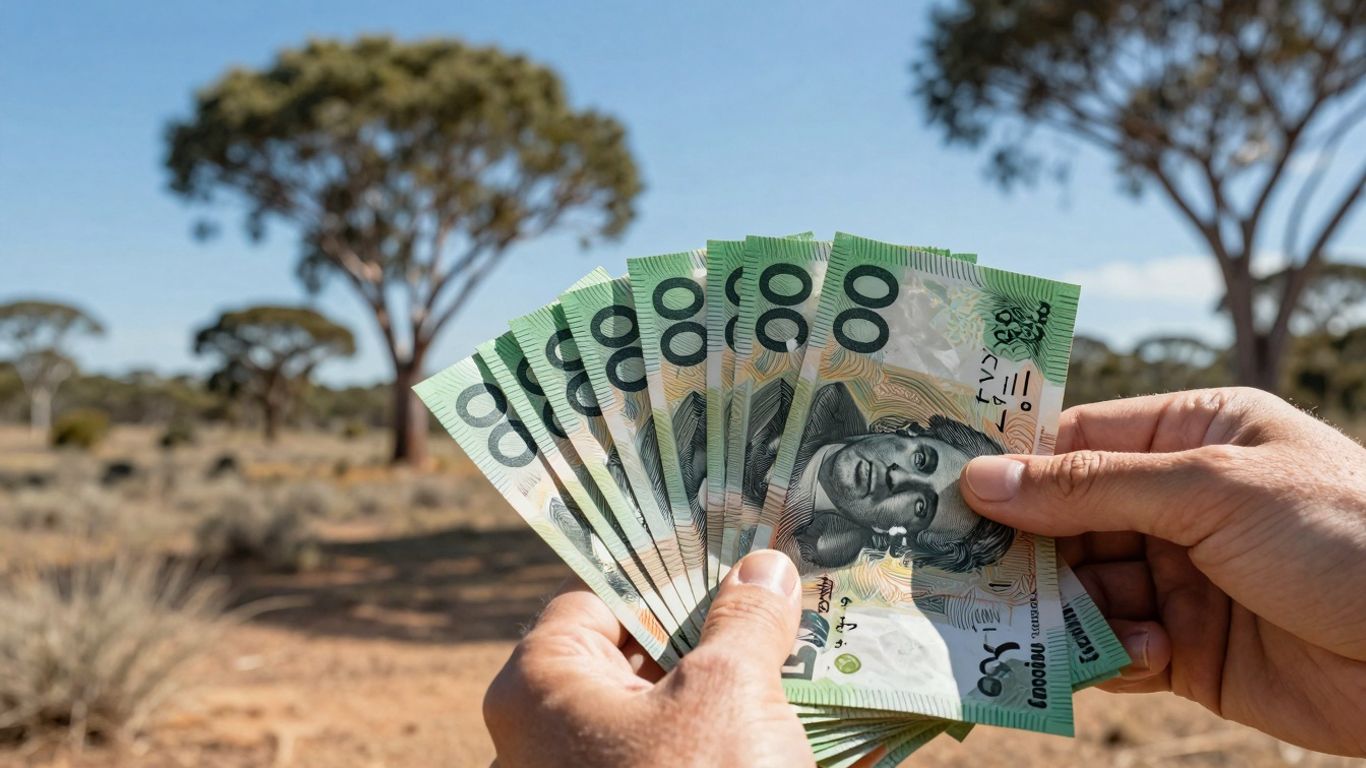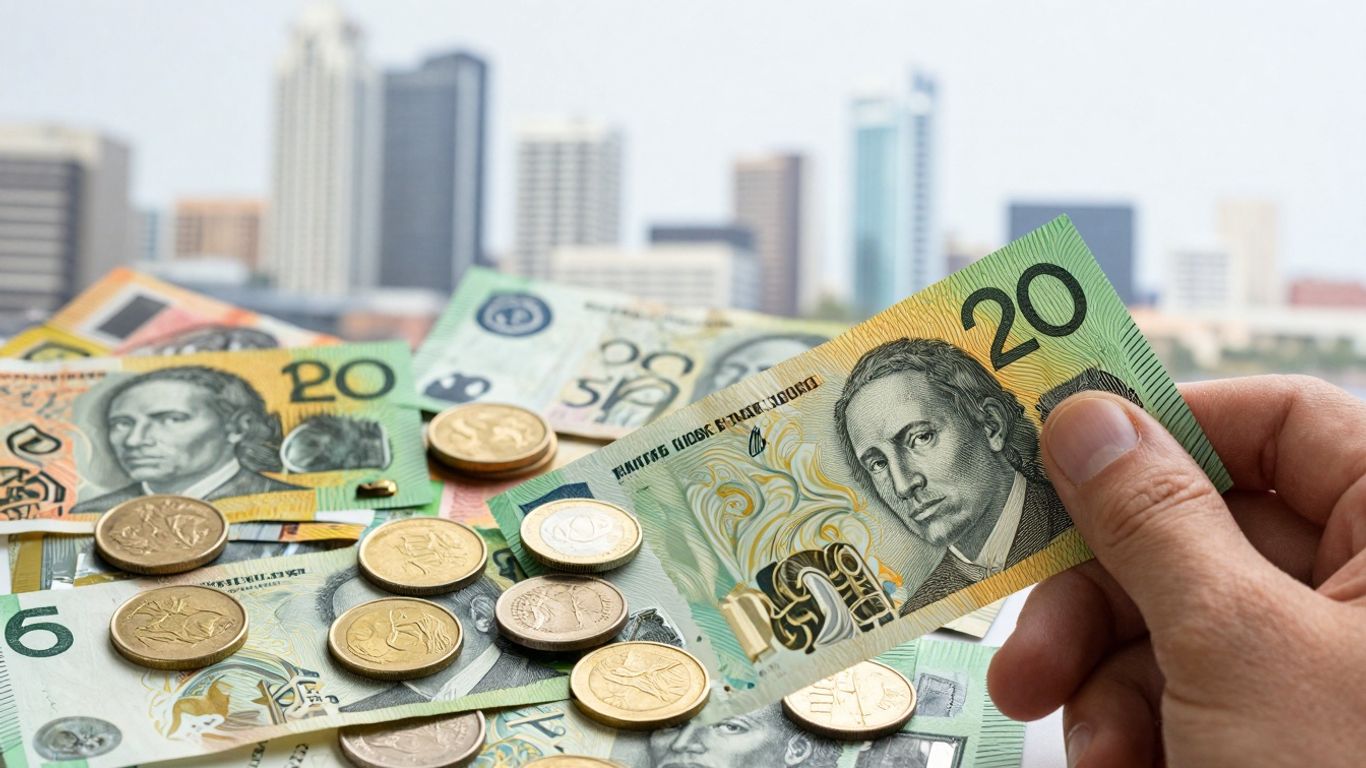Alright, listen up, cobber! If your bank account looks like it’s been through a bushfire, then you’re in the right spot. We’re talking about getting your finances sorted, not with some fancy app, but with a good old-fashioned budgeting folder. It might sound a bit old school, but trust me, this simple tool can turn your money worries into a walk in the park. Let’s get cracking and see how a proper budgeting folder can change your financial game.
Key Takeaways
- A budgeting folder helps you see exactly where your money goes.
- Picking the right type of folder makes a big difference for how you use it.
- Setting up your folder with clear sections keeps things easy to follow.
- Checking your folder often helps you stay on track with your money plans.
- Using a budgeting folder can lead to less money stress and more savings.
Why Every Aussie Needs A Budgeting Folder

Taming The Financial Wild West
Let’s be honest, managing your money can feel like wrestling a crocodile sometimes. Bills flying in, expenses popping up outta nowhere – it’s a proper financial wild west out there. A budgeting folder is like your trusty whip and saddle, giving you the tools to control your finances and bring some order to the chaos. It’s about getting a grip and knowing exactly where your hard-earned dosh is going. No more guessing, no more surprises, just good ol’ fashioned financial control.
From Chaos To Cashflow Clarity
Ever feel like your money disappears into thin air? One minute you’re flush, the next you’re wondering where it all went. A budgeting folder helps turn that chaos into clarity. By tracking your income and expenses, you can see exactly where your money is going each month. This clarity allows you to make informed decisions about your spending, identify areas where you can cut back, and ultimately, improve your cashflow. It’s like having a financial GPS, guiding you towards your goals.
Your Personal Money Maestro
Think of your budgeting folder as your personal money maestro, conducting the orchestra of your finances. It’s not just about tracking expenses; it’s about creating a plan, setting goals, and making your money work for you. With a well-organised folder, you can easily see your progress, adjust your strategy as needed, and celebrate your wins along the way. It’s about taking charge and becoming the boss of your own financial destiny. A budgeting folder is the first step to financial freedom.
Having a budgeting folder isn’t just about saving money; it’s about peace of mind. Knowing where your money is going and having a plan for the future can significantly reduce stress and improve your overall well-being. It’s an investment in your financial health and a step towards a more secure future.
Choosing The Right Budgeting Folder For Your Moolah
Binders Versus Accordions: The Great Debate
Okay, so you’re ready to get your finances sorted, good on ya! But first, you gotta pick your weapon of choice: the binder or the accordion folder. Binders are like the reliable ute of the budgeting world – sturdy, customisable, and you can chuck in as many extra pages as you need. Accordion folders, on the other hand, are like those fancy European hatchbacks – compact, organised, but maybe not the best for heavy-duty work.
- Binders let you add, remove, and rearrange sections as your budget evolves.
- Accordion folders are great for pre-defined categories and quick access.
- Consider how much detail you need to track. If you’re a spreadsheet whiz, a binder might be better. If you prefer simplicity, go accordion.
Features That Make A Difference
Not all folders are created equal, mate. Look for features that’ll actually make your life easier. Clear pockets are a must for receipts. Zippers are handy for loose change (because who doesn’t have a few stray coins rattling around?). And don’t underestimate the power of a good pen loop – nothing worse than scrambling for a pen when you’re trying to balance the books.
- Clear Pockets: Essential for receipts, invoices, and statements.
- Zippers/Envelopes: Perfect for storing cash, coins, or small documents.
- Pen Loop: Keep a pen handy for quick notes and calculations.
- Index Tabs: Make it easy to find specific sections quickly.
Durability For The Long Haul
Let’s be honest, your budgeting folder is gonna get a workout. It’ll be tossed in bags, shoved in drawers, and generally put through the wringer. So, you want something that can handle the rough and tumble. Look for folders made from sturdy materials like thick plastic or reinforced cardboard. Metal rings in binders are generally more durable than plastic ones. And if you’re going for an accordion folder, make sure the seams are well-glued or stitched. You don’t want your financial life falling apart at the seams, do ya?
A good budgeting folder is an investment. Spending a bit more upfront on a durable folder will save you money in the long run by preventing the need for replacements. Plus, a well-maintained folder makes the whole budgeting process feel less like a chore and more like a step towards financial freedom.
Setting Up Your Budgeting Folder Like A Pro
Categorising Your Coin
Right, so first things first, you need to figure out where your money is actually going. This is where you break down your spending into categories. Think about it like sorting your laundry – you wouldn’t chuck your whites in with your colours, would ya? Same goes for your dosh!
Here’s a few common categories to get you started:
- Fixed Expenses: Rent/Mortgage, Loan Repayments, Insurance
- Variable Expenses: Groceries, Petrol, Utilities (gas, electricity, water)
- Discretionary Spending: Eating out, Entertainment, Hobbies, Clothes
- Savings: Emergency Fund, Holiday Fund, Investments
The key is to be specific. Instead of just ‘Food’, break it down into ‘Groceries’ and ‘Eating Out’. This gives you a much clearer picture of where you can potentially cut back. You might be surprised how much you’re spending on those cheeky takeaway coffees each week!
Essential Sections To Include
Okay, now you’ve got your categories sorted, let’s think about the actual sections you’ll need in your budgeting folder. This is where you get to be a bit creative and tailor it to your own needs. But here are some must-haves:
- Monthly Budget Overview: A summary of your income and expenses for the month. This is your ‘at-a-glance’ view of your financial situation.
- Expense Trackers: Individual sheets or pockets for each category, where you record your spending. You can use a simple spreadsheet or even just a notebook.
- Bill Payment Checklist: A list of all your bills, due dates, and amounts. This helps you stay on top of your payments and avoid late fees. Consider adding bill payment checklist to your folder.
- Savings Goals: A section dedicated to your savings goals, with target amounts and deadlines. This keeps you motivated and on track.
- Debt Tracker: If you have any debts (credit cards, loans, etc.), include a section to track your balances, interest rates, and repayment progress.
Personalising Your Pockets
This is where you can really make your budgeting folder your own. Think about what works best for you and your lifestyle. Do you prefer to track your expenses on paper, or using a spreadsheet? Do you need a separate section for your business expenses?
Here are a few ideas to get you started:
- Visual Aids: Use colour-coded labels, stickers, or highlighters to make your folder more visually appealing and easier to navigate.
- Inspirational Quotes: Add some motivational quotes to keep you inspired and focused on your financial goals.
- Photos of Your Goals: Include pictures of your dream holiday, your new house, or whatever you’re saving for. This will help you stay motivated and remind you why you’re budgeting in the first place.
Remember, your budgeting folder is a tool to help you achieve your financial goals. Don’t be afraid to experiment and find what works best for you. The most important thing is to be consistent and stick with it. You’ll be surprised at how much of a difference it can make to your financial wellbeing.
Daily Habits For A Top-Notch Budgeting Folder

Tracking Every Tenner
Right, so you’ve got your budgeting folder all set up – bonza! But it’s not gonna do much good gathering dust. The key is to actually use it, every single day. I reckon the most important thing is to track every single dollar that comes in and goes out. Don’t just guesstimate; write it down!
- Use a small notebook to jot down expenses on the go.
- Keep receipts in a temporary pocket until you can log them.
- Consider using a budgeting app alongside your folder for easy tracking.
It might seem like a pain at first, but trust me, it becomes second nature. Plus, you’ll be amazed at where your money actually goes. You might find you’re spending more on coffees than you thought, or that those little trips to the servo for snacks are adding up.
Regular Reconciliation Rituals
Okay, so you’re tracking your spending daily – good on ya! Now, you need to reconcile your folder with your bank statements regularly. I’m talking at least once a week, maybe even more if you’re a big spender. This is where you compare what you’ve written down with what your bank says you’ve spent. It’s all about understanding spending habits and making sure everything lines up.
Here’s a simple way to do it:
- Grab your bank statement (online or paper).
- Go through each transaction and match it to an entry in your budgeting folder.
- Highlight or tick off each matched transaction.
- Investigate any discrepancies – did you forget to record something? Was there an unexpected fee?
Reviewing Your Riches
Alright, you’re tracking, you’re reconciling – you’re practically a financial guru! But the final step is to actually review your budgeting folder regularly. This isn’t just about making sure the numbers add up; it’s about looking at the bigger picture. Are you sticking to your budget? Are you making progress towards your financial goals? This is where you can really start to see the benefits of all your hard work. Maybe you can start thinking about money-saving tips to boost your savings.
Consider these questions when reviewing:
- Are there any areas where you’re consistently overspending?
- Can you identify any opportunities to cut back on expenses?
- Are you on track to achieve your short-term and long-term financial goals?
| Category | Budgeted Amount | Actual Amount | Difference | Notes |
|---|---|---|---|---|
| Groceries | $200 | $250 | -$50 | Need to cut back on takeaway! |
| Entertainment | $100 | $80 | +$20 | Doing well! |
| Transport | $50 | $60 | -$10 | Petrol prices are killing me! |
Beyond The Basics: Advanced Budgeting Folder Tips
Forecasting Future Finances
Alright, so you’ve got the basics down pat. Now it’s time to gaze into your crystal ball – or, you know, your budgeting folder – and start forecasting. This isn’t about predicting the lotto numbers; it’s about anticipating future expenses and income. Think about things like annual car rego, Christmas pressies, or that dental appointment you’ve been putting off.
- Create a ‘Future Expenses’ section: Dedicate a section in your folder to jotting down these irregular but inevitable costs.
- Estimate costs: Do some research and get a rough idea of how much these things will set you back.
- Allocate funds monthly: Divide the total cost by the number of months until the expense is due, and set aside that amount each month. This helps avoid a nasty surprise when the bill arrives.
Debt Demolition Strategies
Debt can feel like a massive weight, but your budgeting folder can be your secret weapon for smashing it to smithereens. The key is to have a clear plan of attack.
First, list all your debts – credit cards, personal loans, the whole shebang. Include the interest rates and minimum repayments. Then, choose a debt demolition strategy:
- The Avalanche Method: Focus on paying off the debt with the highest interest rate first, while making minimum payments on the others. This saves you money in the long run.
- The Snowball Method: Pay off the smallest debt first, regardless of interest rate. This gives you a quick win and motivates you to keep going.
- Balance Transfers: Look into transferring high-interest debt to a card with a lower rate. Just be mindful of any fees involved.
Remember to track your progress in your budgeting folder. Seeing those debt balances shrink is incredibly satisfying and keeps you motivated.
Saving For That Dream Holiday
Who doesn’t dream of escaping the Aussie heat for a tropical getaway? Or maybe exploring the rugged beauty of the Outback? Your budgeting folder can help turn those dreams into reality.
- Set a specific goal: Where do you want to go, and how much will it cost? Be realistic.
- Create a dedicated savings section: Label it something inspiring, like ‘Bali Bliss’ or ‘Outback Adventure’.
- Automate your savings: Set up a regular transfer from your everyday account to your holiday savings account. Even a small amount each week adds up over time.
Consider using a monthly planner and bill organiser to keep track of your savings progress and stay motivated. You’ll be sipping cocktails on that beach before you know it!
Common Blunders To Avoid With Your Budgeting Folder
The ‘Set And Forget’ Trap
Right, so you’ve spent a fair bit of time setting up your budgeting folder. You’ve got all your categories sorted, your pockets labelled, and you’re feeling pretty chuffed with yourself. But here’s the thing, mate: a budgeting folder isn’t a magic wand you can just wave and then forget about. It needs constant attention, like a needy pet. If you just ‘set and forget’, you’ll quickly find that your budget is way off, and you’re back to square one.
Think of it like this:
- You need to check in regularly.
- Update it with your latest spending.
- Make adjustments as needed.
Treat your budgeting folder like a living document. It needs to evolve with your life and your financial situation. Don’t let it gather dust in a drawer; give it the love and attention it deserves.
Overcomplicating Your System
Crikey, sometimes we can get a bit carried away, can’t we? You might think you need a super complex system with dozens of categories and subcategories to really get on top of your finances. But honestly, that’s just going to make things harder in the long run. Keep it simple, stupid! A budget calculator can help you avoid this.
Here’s why overcomplicating things is a bad idea:
- It’s harder to maintain.
- You’re less likely to stick with it.
- It can be overwhelming and discouraging.
Instead, focus on the essential categories that really matter to you. You can always add more later if you need to, but start with the basics and build from there.
Ignoring The Small Stuff
It’s easy to focus on the big expenses – rent, mortgage, car payments – and forget about the little things. But those small expenses can really add up over time. That daily coffee, the sneaky chocolate bar, the impulse buy at the checkout – they might not seem like much on their own, but they can seriously derail your budget if you’re not careful.
Here’s a table to illustrate the point:
| Expense | Cost per day | Cost per week | Cost per month | Cost per year |
|---|---|---|---|---|
| Daily Coffee | $4 | $28 | $120 | $1460 |
| Chocolate Bar | $2 | $14 | $60 | $730 |
| Impulse Buy | $5 | $35 | $150 | $1825 |
| Total | $11 | $77 | $330 | $4015 |
See? It all adds up! Make sure you’re tracking every tenner, no matter how small. It’s the only way to really get a handle on your spending and achieve your financial goals. Consider using coupons to save money on these small expenses.
The Long-Term Benefits Of A Dedicated Budgeting Folder
Achieving Financial Freedom
Using a budgeting folder isn’t just about knowing where your money goes; it’s about setting yourself up for the future. It’s a tool that can help you achieve genuine financial freedom. By consistently tracking your income and expenses, you gain a clear picture of your financial health, allowing you to make informed decisions about saving, investing, and debt reduction. This system is ideal for individuals focused on long-term financial goals, allowing them to prioritise savings and investments without meticulously tracking every single expense. It’s about building a solid foundation for a secure and prosperous future, mate.
Reducing Money Stress
Let’s be honest, money worries are a massive pain in the backside. A budgeting folder can seriously cut down on that stress. When you know exactly where your money is going, you’re less likely to have those late-night panic attacks about bills or unexpected expenses. It gives you a sense of control, and that control translates directly into peace of mind. No more guessing, no more hoping – just clear, actionable information. It’s like having a financial security blanket, but way more effective.
Building Wealth Down Under
Building wealth isn’t just for the high rollers; it’s achievable for anyone with a plan. A budgeting folder is your first step. By identifying areas where you can cut back and redirecting those funds into savings or investments, you’re essentially planting the seeds for future growth. Over time, those small changes can add up to significant wealth. Think of it as compounding interest, but for your entire financial life. Plus, it helps you stay focused on your goals, whether it’s buying a house, retiring early, or just having a bit more dosh in the bank.
A budgeting folder is more than just a collection of papers; it’s a roadmap to a better financial future. It provides clarity, reduces stress, and empowers you to make smart choices that will benefit you for years to come. It’s about taking control of your finances and building a life you can truly enjoy, without the constant worry about money.
So, What’s the Go?
Alright, so there you have it. Getting your money sorted doesn’t have to be a massive headache. A good budgeting folder, whether it’s a fancy one you bought or just a plain old folder you’ve jazzed up yourself, can make a real difference. It’s about getting a handle on where your cash is going, plain and simple. No more wondering where your pay packet disappeared to. Give it a go, you might be surprised how much easier things get. It’s a fair dinkum way to feel more in control of your finances.
Frequently Asked Questions
Is a budgeting folder hard to use?
Nah, not at all! A budgeting folder is super simple. It’s just a way to keep track of your money coming in and going out, so you know where it all goes. Think of it like a personal money diary, but for your finances.
What kind of folder should I get?
You can use a simple binder with dividers, an accordion file, or even just some envelopes. The best one is whatever feels right for you and helps you keep things tidy. No need for anything fancy, mate!
What should I put in my budgeting folder?
Start with categories like ‘Bills’, ‘Groceries’, ‘Transport’, and ‘Fun Money’. You can add more as you go, but keeping it simple at the start makes it easier to stick with.
How often do I need to update my folder?
Try to check it every day or every few days. Just a quick look to jot down what you’ve spent. It doesn’t take long, and it helps you stay on top of things.
Why bother with a budgeting folder?
It helps you see where your money goes, stop overspending, and save up for cool stuff like a holiday or a new car. It’s all about feeling more in control of your cash.
What if I forget to use it sometimes?
Don’t stress if you miss a day or two. Just get back to it when you can. The main thing is to keep trying and not give up. It gets easier with practise!





